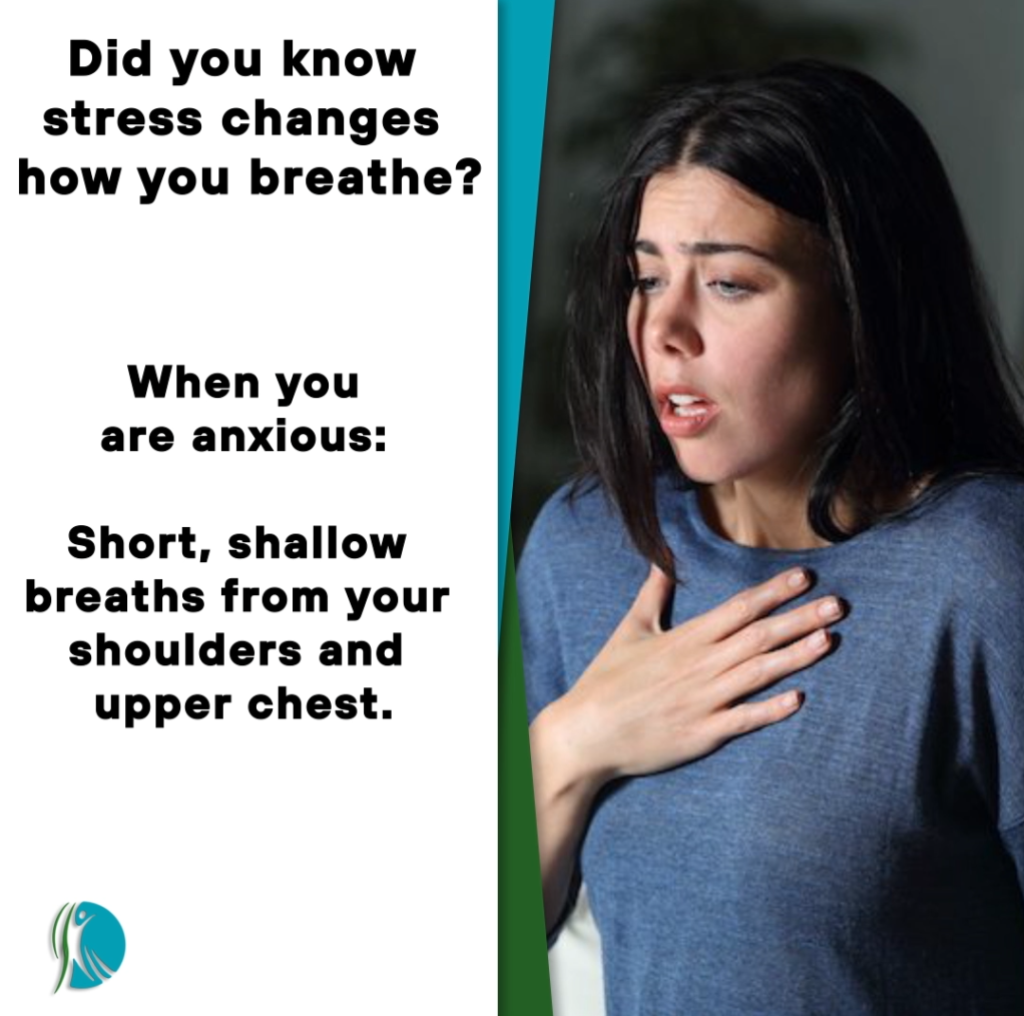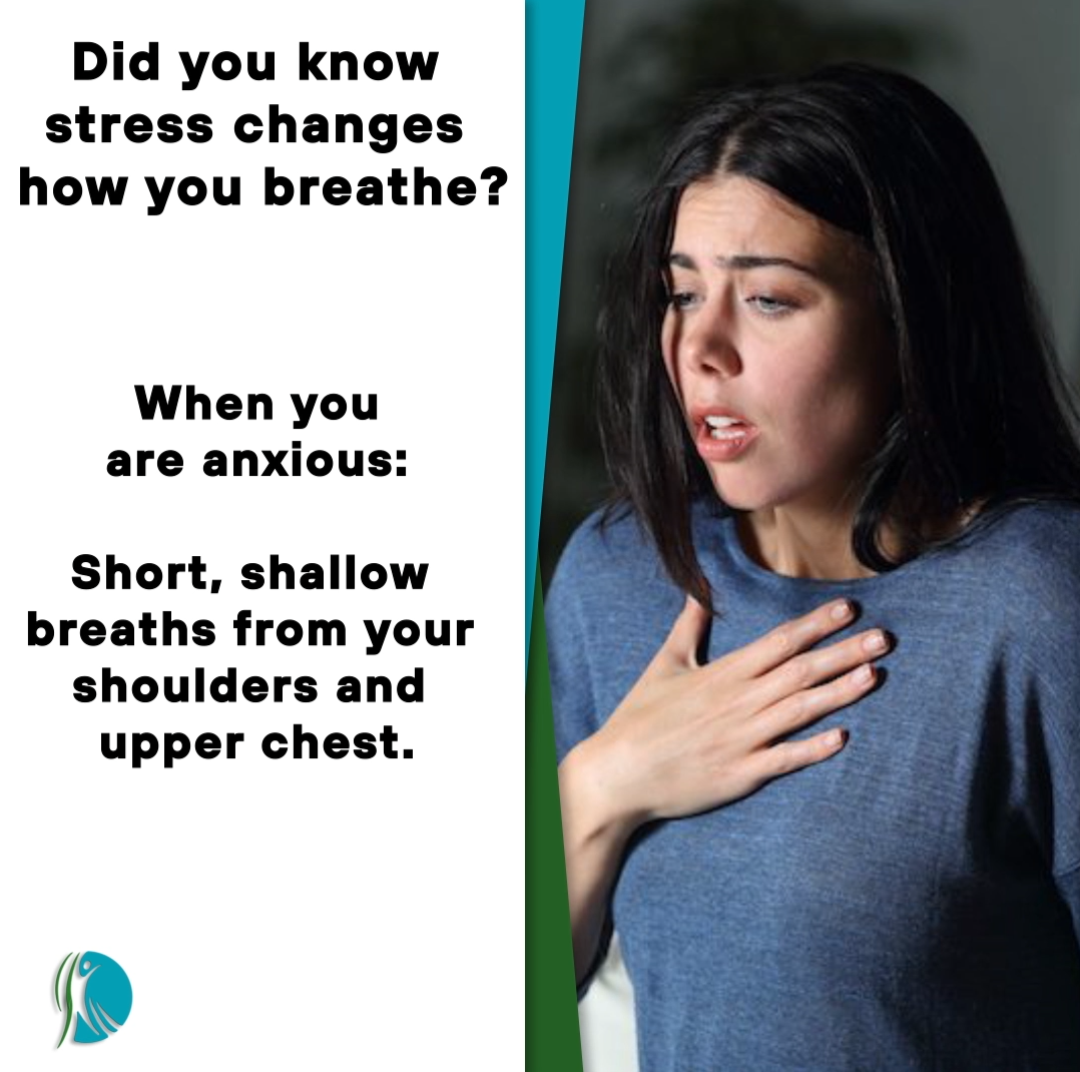Stress affects your breathing
Going through medical testing, new diagnosis and treatments can be stressful. When you feel anxious you may notice that you are using your shoulders to breath “apically”. Apical breathing feels like short shallow breaths focused in the upper part of your chest and shoulders.
When you are relaxed and feeling calm, you may notice that you are using the diaphragm muscle at the bottom of your lungs. Relaxed breathing feels like gentle regular breaths in the lower part of your chest and belly.

Vital signs
Doctors measure 4 vital signs to evaluate your body’s basic functions. These include your pulse, temperature, blood pressure, and breathing rate. Normal breathing rate ranges between 12-20 breaths per minute. Breathing controls the amount of oxygen and carbon dioxide gas you inhale and exhale. Regular breathing helps to balance your blood’s pH (how alkaline or acidic it is). Normal pH is 7.4 and helps your body’s metabolism to work well.
Assess your breathing.
Place one hand on your belly button and the other on your upper chest with your index finger resting on your collar bone. After a few breaths notice which hand moves first and most. Is it your top hand or your hand on your belly? Normal breathing is in through your nose down into the belly, which rises and then falls as you breath out. Normal breathing rate ranges between 12-20 breaths per minute.
Breathing exercise #1. Belly Breaths
Anxiety and stress may cause you to breath apically rather than with your diaphragm muscle. Use this breathing exercise to activate belly breathing to feel better. Start by lying down, with your knees bent, or sitting up straight in a chair, then place your hands gently over your belly button so you can feel your hands rising up and down as you direct your breath towards your belly.
- To start, exhale through your mouth making a whooshing sound
- Then inhale through your nose up to a count of 4, feel your tummy rise up and then exhale through your mouth for a count of up 8 and feel your tummy falling.
- Continue belly breathing in a relaxed peaceful way for 2-3 minutes.
Breathing exercise #2. The 4-7-8 Breath.
Good sleep is good at every step of your illness and recovery. Anxiety and stress may interrupt your sleep. Learn to use the 4-7-8 breath to help you to go back to sleep. Repeat the 4-7-8 breath 4 times. You start by inhaling then holding then exhaling. The holding phase gives your lungs time to exchange oxygen and carbon dioxide gases and to rebalance your blood’s pH.
- To start, exhale through your mouth making a whooshing sound.
- Then inhale through your nose for a count of up to 4 seconds. Then hold your breath for a count of up to 7 seconds and then gently exhale for a count of up to 8 seconds.
- Continue doing the 4, 7 and 8 breath for 4 breaths.
No matter what stage of testing, diagnosis or treatments you are at, it is good to know how you may use breathing to manage stress and to feeling rested each morning. I encourage you to try these breathing exercises to help you manage better. Do let me know how you get on? Best. Siobhan
